Market Data

January 7, 2019
Net Job Creation Through December 2018
Written by Peter Wright
The U.S. labor market finished 2018 on a strong note. December was the first month ever for total nonfarm payrolls to exceed 150 million, according to the latest Bureau of Labor Statistics data.
Unlike the Commerce Department and Bureau of Economic Analysis, the Bureau of Labor Statistics (BLS) remains funded under the current government shutdown. Therefore, our employment reports for December will be published as normal, but our construction and trade reports will be delayed until the impasse is resolved.
Rising employment and wages are the main contributor to GDP growth because personal consumption accounts for almost 70 percent of GDP. Steel consumption is related to GDP; therefore, this is one of the indicators that helps us understand the reality of the steel market. Net job creation in December as reported by the BLS on Friday was 312,000. In addition, October was revised up by 37,000 and November up by 21,000 jobs.
Figure 1 shows the three-month moving average (3MMA) of the number of jobs created monthly since 2000 as the brown bars and the total number employed as the black line. These numbers are seasonally adjusted by the BLS, which has been criticized in the past for the ineffectiveness of its seasonal adjustment calculations.
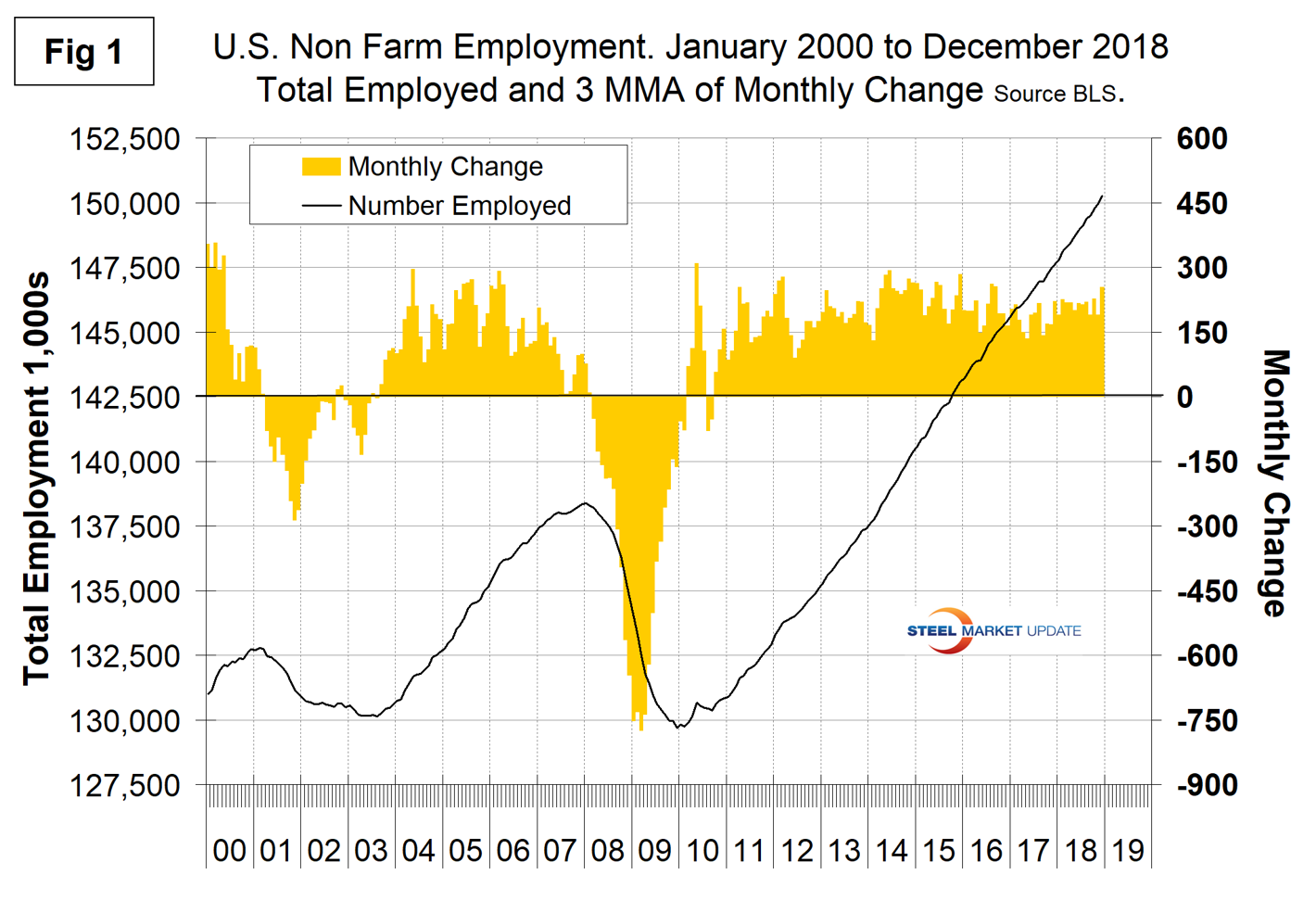
To examine if any seasonality is left in the data after adjustment, we have developed Figure 2. In the eight years since and including 2011, the average month-on-month change from November to December has been a decline of 22 percent. This year December was up by a remarkable 77 percent. In addition, October and November were revised up by a total of 58,000 jobs. We think it’s significant to look at the results this way because some reports in the press will get overly excited or depressed by a monthly result without putting it in context. In the case of this latest data, the result is exceptionally strong, so exuberance seems justified.

In order to get another look at the degree of change, we have developed Figure 3. This shows the same total employment line as Figure 1, but includes the year-over-year growth on a percentage basis. From this we conclude there has been a small gradual improvement since October last year.
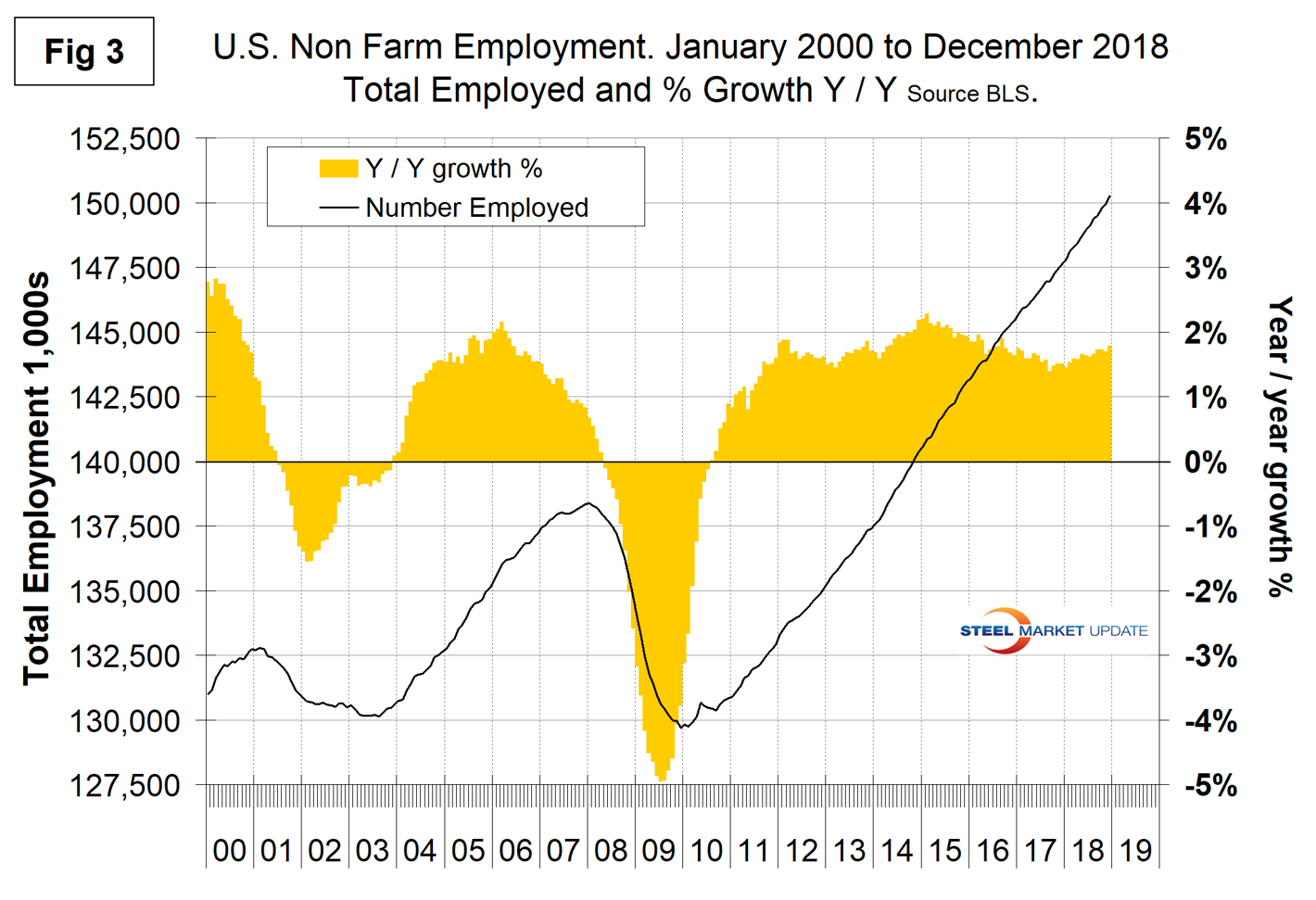
December was the first month that total nonfarm payrolls ever exceeded 150 million and was 11.9 million more than the pre-recession high of February 2008. According to the latest BLS data, the average workweek for all employees on private nonfarm payrolls increased by 0.1 hour to 34.5 hours in December. In manufacturing, both the workweek and overtime increased by 0.1 hour to 40.9 hours and 3.6 hours, respectively. The average workweek for production and nonsupervisory employees on private nonfarm payrolls held at 33.7 hours. In December, average hourly earnings for all employees on private nonfarm payrolls rose 11 cents to $27.48. Over the year, average hourly earnings have increased by 84 cents, or 3.2 percent. Average hourly earnings of private-sector production and nonsupervisory employees increased by 9 cents to $23.05 in December.
The official unemployment rate, U3, reported in the BLS Household survey (see explanation below) increased from 3.7 percent in November to 3.9 percent in December. This is not a very representative number. The more comprehensive U6 unemployment rate declined from 9.2 percent in January last year to 7.6 percent in November (Figure 4). The difference between these two measures in December was 3.7 percent. U6 includes individuals working part time who desire full-time work and those who want to work but are so discouraged they have stopped looking.
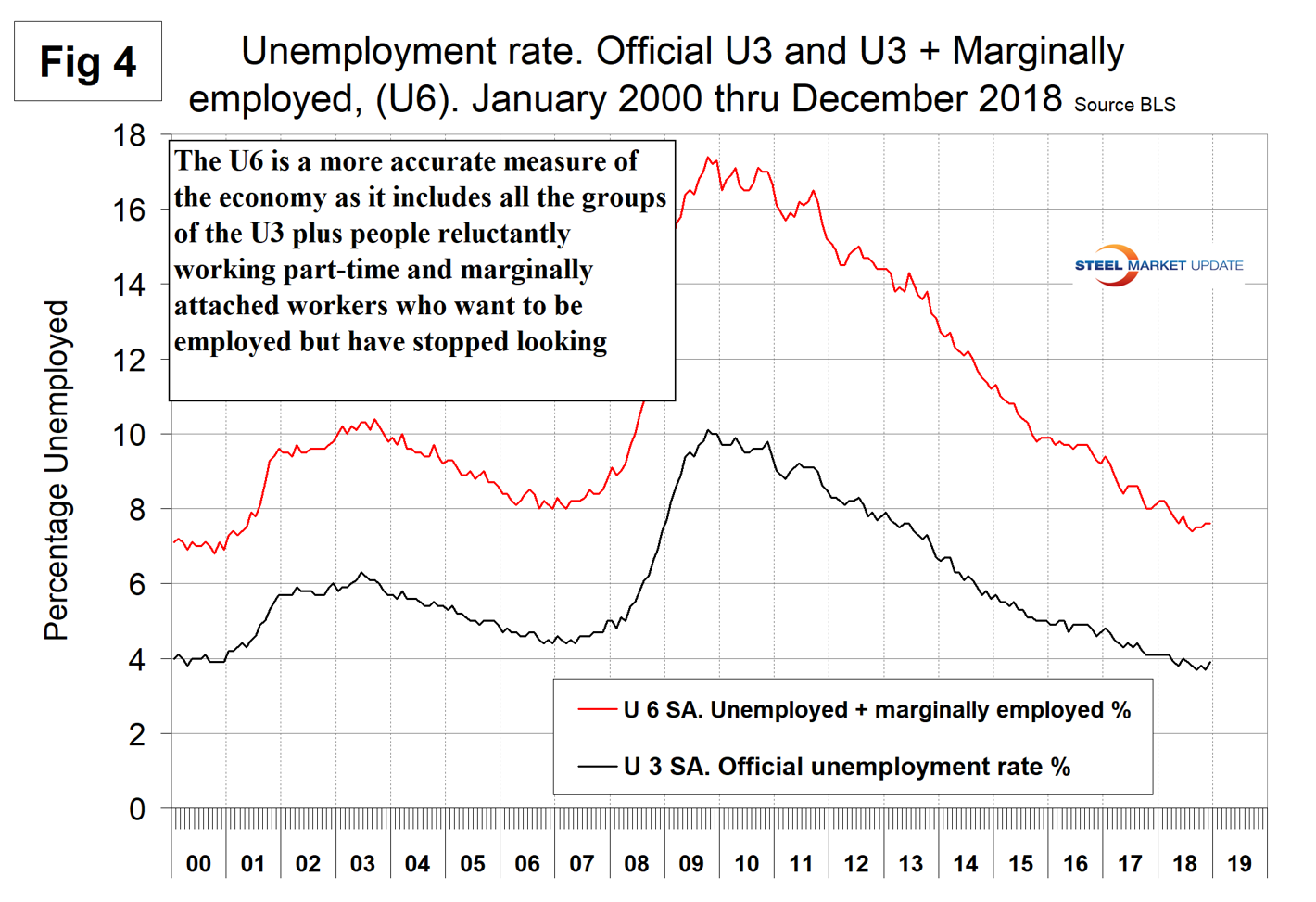
Moody’s Analytics summarized as follows: “The labor market will to continue to expand in 2019, the pace of job growth will moderate, wage pressures will accelerate and the unemployment rate will fall further. Average monthly payroll gains will fall to less than 170,000 and job growth will cease altogether in 2020. The unemployment rate will slide to as low as 3.3% this year before reversing course in 2020. Meanwhile, expected wage gains will reach 3.5%, consistent with the very low unemployment rate.”
The labor force participation rate is calculated by dividing the number of people actively participating in the labor force by the total number of people eligible to participate. This measure was 63.1 percent in December, up from 62.9 percent in November; The 3MMA at 63.0 percent hasn’t changed much in over two years. Another gauge is the number employed as a percentage of the population, which we think is more definitive. In December, the employment-to-population ratio was 60.6 percent, the highest number since December 2008. The employment-to-population ratio has made progress for the last four years, but the labor force participation rate has been stalled for two years. Figure 5 shows both measures on one graph.
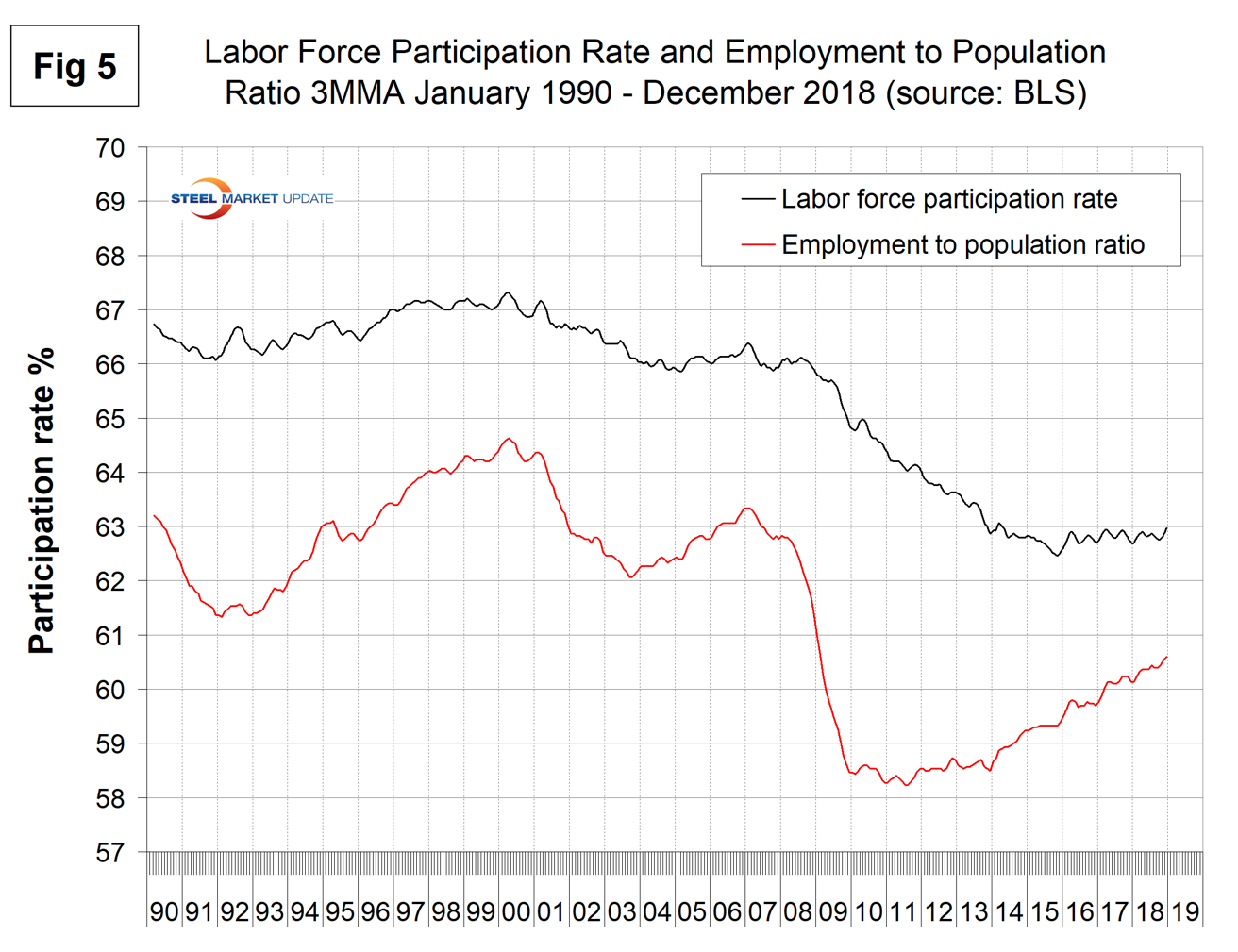
In the 36 months since and including January 2016, there has been an increase of 7,173,000 full-time and a decrease of 384,000 part-time jobs. Figure 6 shows the rolling 12-month change in both part-time and full-time employment. This data comes from the Household survey and part-time is defined as less than 35 hours per week. Because the full-time/part-time data comes from the Household survey and the headline job creation number comes from the Establishment survey, the two cannot be compared in any given month. To overcome the volatility in the part-time numbers, we look at a rolling 12 months for the full-time and part-time employment picture shown in Figure 6.
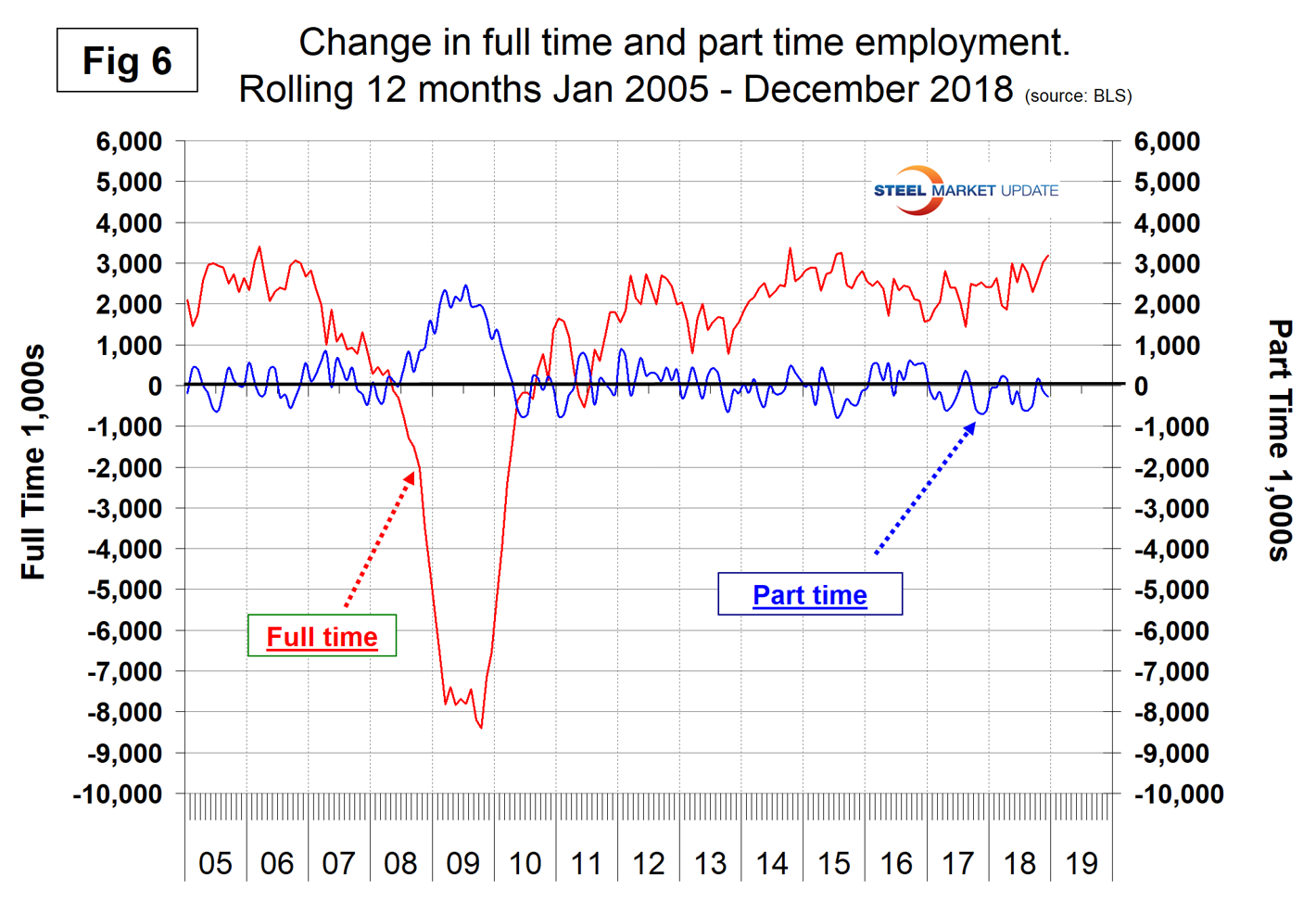
The job openings report known as JOLTS is reported on about the 10th of the month by the Federal Reserve and is over a month in arrears. Figure 7 shows the history of unfilled jobs through October when openings stood at 7,079,000. This was down from the all-time high of 7,293,000 in August. There are now more job openings than there are people counted as unemployed.

Initial claims for unemployment insurance, reported weekly by the Department of Labor, flattened in 2017 except for the hurricane-driven spike, then resumed their decline in 2018. There was a low of 206,000 in the four-week moving average through Sept. 15 followed by an increase to 218,750 in the week ending Dec. 31. New claims in September were at the lowest level since 1969. The U.S. is enjoying the longest streak since 1973 of initial claims below 300,000 (Figure 8).
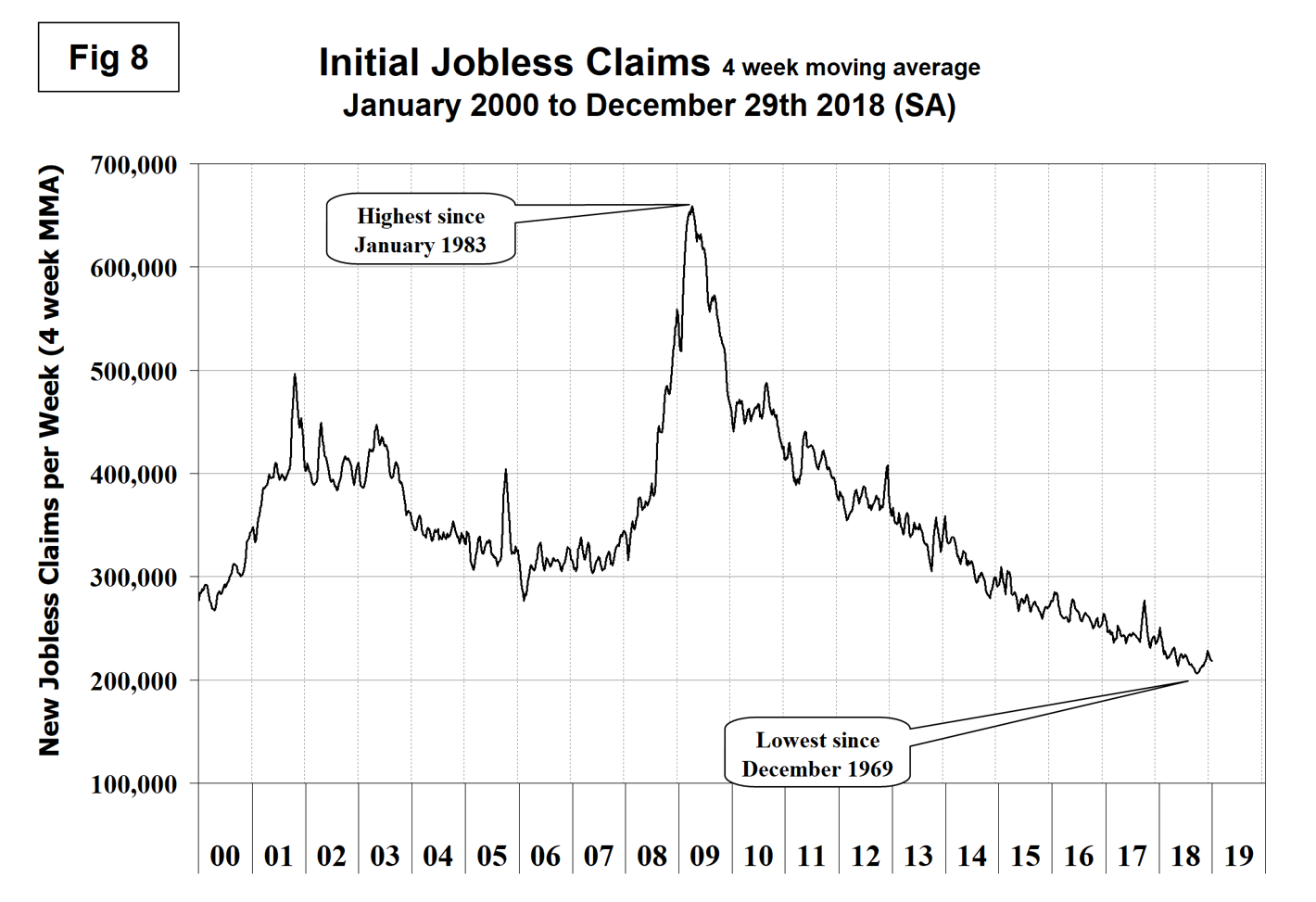
SMU Comment: This was an exceptional report that far exceeded analysts’ expectations and points to a strong steel market for at least the next few months.
Explanation: On the first Friday of each month, the Bureau of Labor Statistics releases the employment data for the previous month. Data is available at www.bls.gov. The BLS reports on the results of two surveys. The Establishment survey reports the actual number employed by industry. The Household survey reports on the unemployment rate, participation rate, earnings, average workweek, the breakout into full-time and part-time workers and lots more details describing the age breakdown of the unemployed, reasons for and duration of unemployment. At Steel Market Update, we track the job creation numbers by many different categories. The BLS database is a reality check for other economic data streams such as manufacturing and construction. We include the net job creation figures for those two sectors in our “Key Indicators” report. It is easy to drill down into the BLS database to obtain employment data for many subsectors of the economy. For example, among hundreds of sub-indexes are truck transportation, auto production and primary metals production. The important point about all these data streams is the direction in which they are headed. Whenever possible, we try to track three separate data sources for a given steel-related sector of the economy. We believe this gives a reasonable picture of market direction. The BLS data is one of the most important sources of fine-grained economic data that we use in our analyses. The states also collect their own employment numbers independently of the BLS. The compiled state data compares well with the federal data. Every three months, SMU examines the state data and provides a regional report, which indicates strength or weakness on a geographic basis. Reports by individual state can be produced on request.






